Affiliate links on Android Authority may earn us a commission. Learn more.
Redmi Note 9 Pro vs realme 6: More value than you can shake a stick at
March 30, 2021
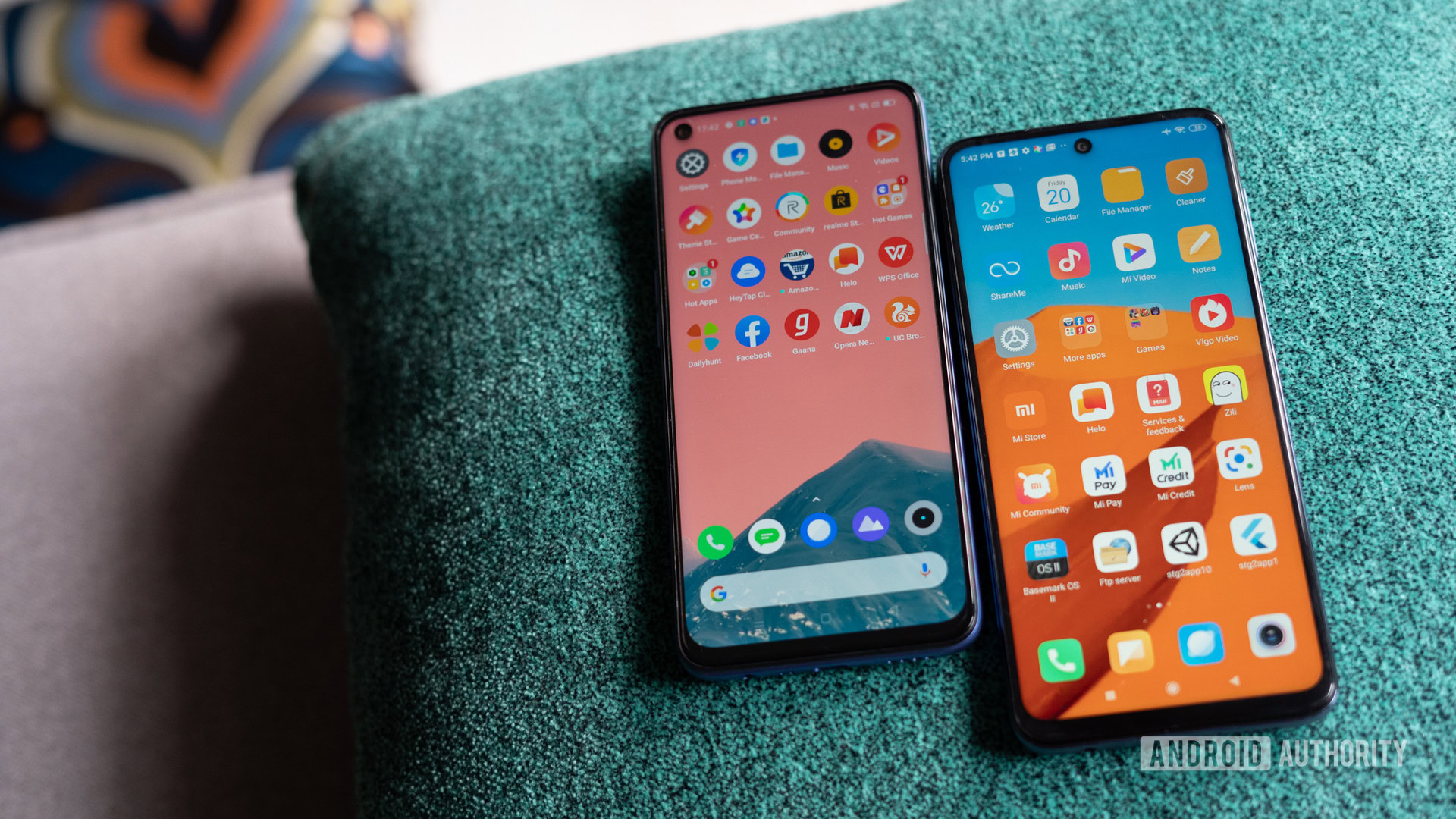
The rivalry between Xiaomi and realme has generated plenty of sparks. From casual name-calling to full-on trolling, the brands have taken a no-holds-barred approach towards one another. But what about the products? After all, that’s what really matters. The fact of the matter is that competition between the two has led to better value for consumers. The constant gamesmanship between Xiaomi and realme has resulted in hardware sold at prices that would have been unbelievable just a short few years ago.
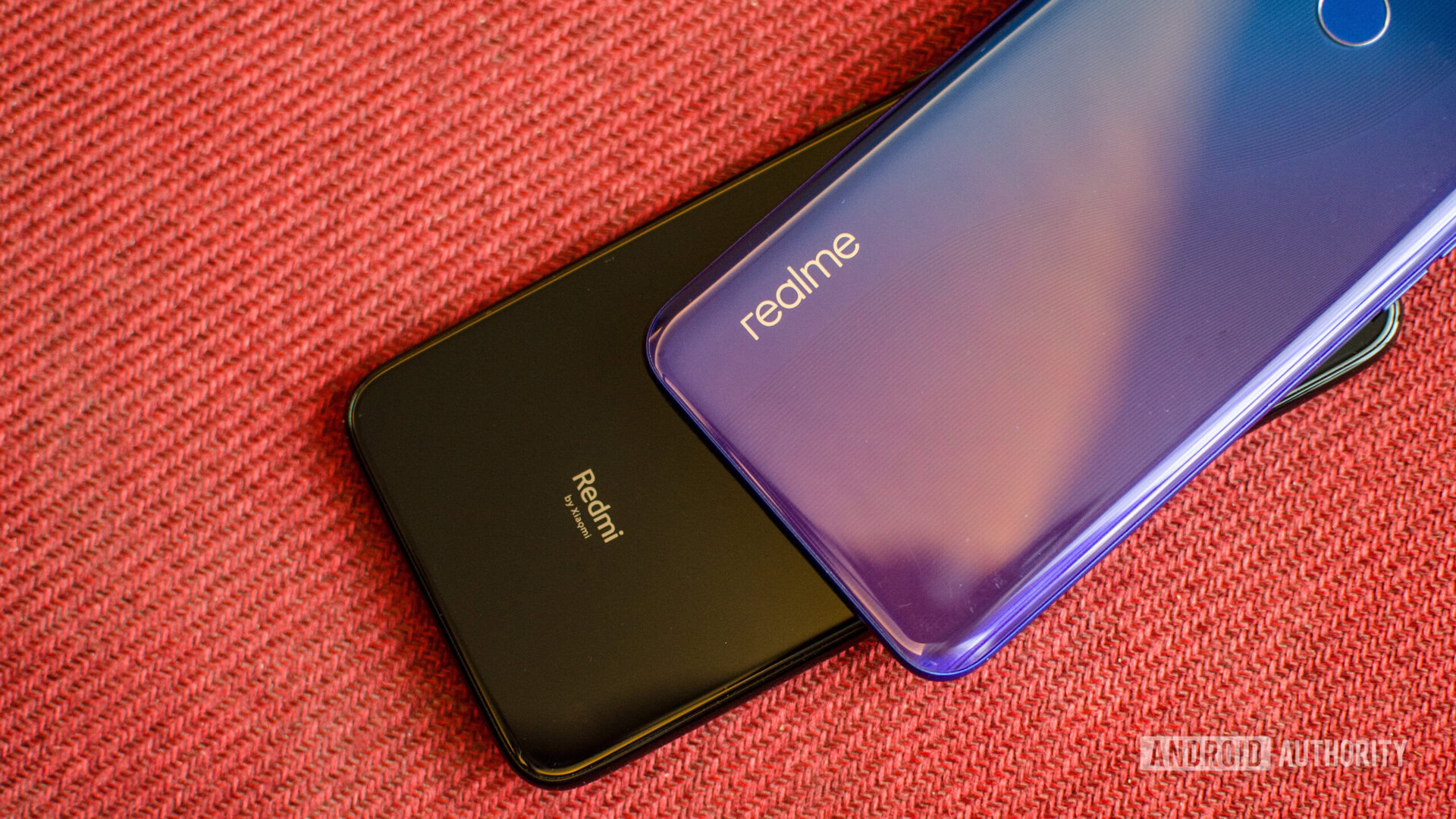
The Redmi Note 9 Pro and realme 6 are the latest mid-rangers to hit the market. We reviewed the Note 9 Pro recently and deemed it to be one of the best values in the market. With similar price points and different focus areas, which one wins? At Android Authority, Redmi Note 9 Pro vs realme 6 finds an answer.
Redmi Note 9 Pro vs realme 6: Design
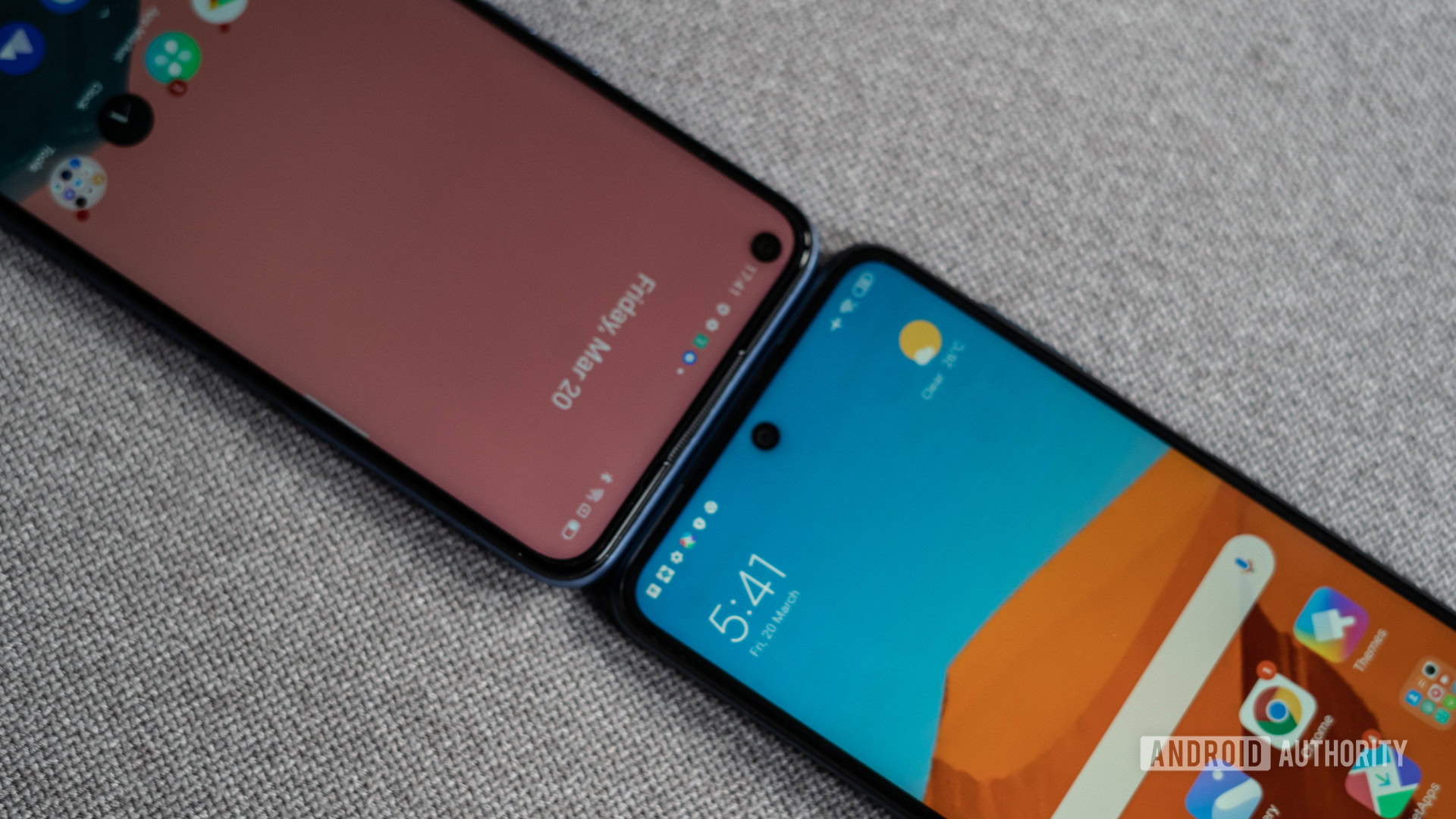
The Redmi Note 9 Pro and realme 6 stand poles apart as far as design is concerned. Aesthetic preferences are subjective, and both the phones have taken a generational leap forward compared to their predecessors.
Both the Redmi Note 9 Pro and realme 6 now sport camera cutouts for the front-facing sensor. The camera cut-out on the Note 9 Pro is centrally mounted, where the realme 6 cutout is offset to the left. I prefer the latter approach. There is a modest-sized chin at the bottom of both the devices.
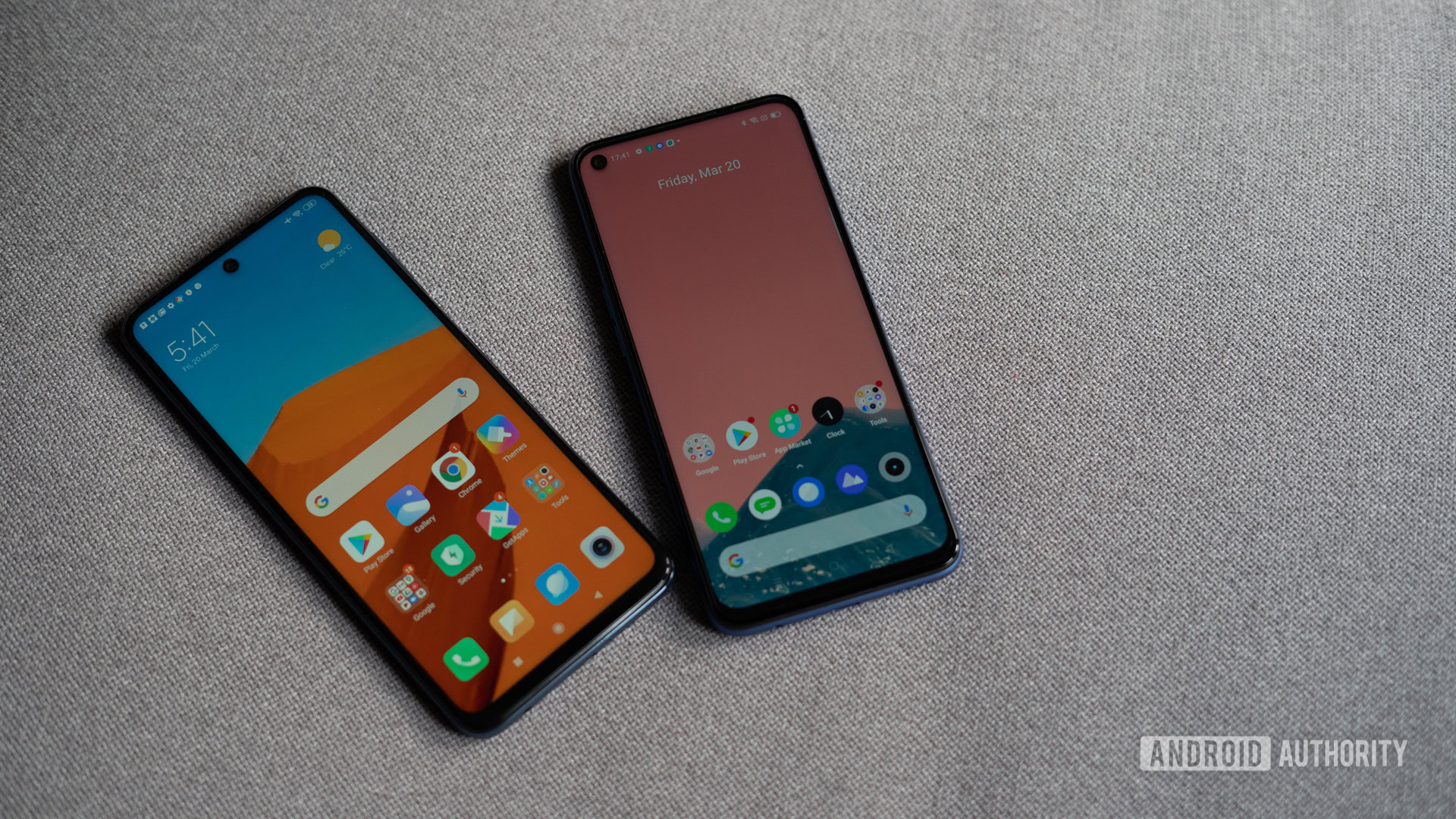
The Note 9 Pro has a significantly larger display at 6.67 inches with Gorilla Glass 5 front and back. I found it to be too big and it makes the phone fairly unwieldy. Add to it the 209g weight, and you’ve got a large honking phone that isn’t the easiest to hold in your hand.
The realme 6 isn’t significantly smaller with its 6.5-inch display with Gorilla Glass 3, but the 191g weight goes a long way in making the phone feel comfortable. A 20g weight difference is nothing to scoff at and the realme 6 is a much more comfortable device to carry about. I suspect the polycarbonate mid-frame and back go a long way in keeping the weight low.
The large display and weight make the Redmi Note 9 Pro unwieldy to hold.
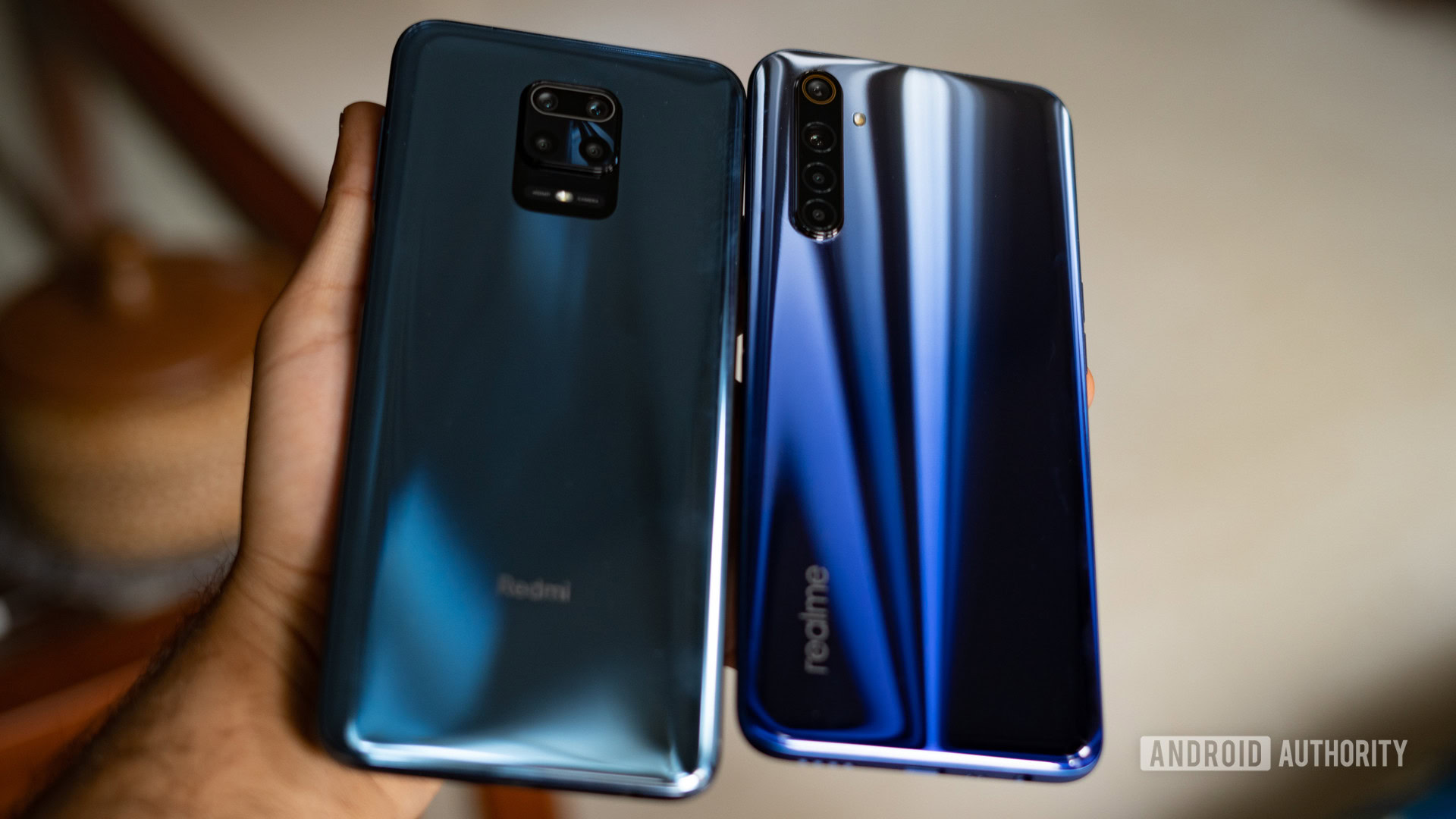
While both phones employ LCD displays with similar default saturation levels and resolution, the realme 6 stands out thanks to its faster 90Hz panel. The quicker refresh rate makes a noticeable difference in how on-screen elements react, providing an enhanced sense of fluidity. It is a subtle difference and is definitely nice to have.
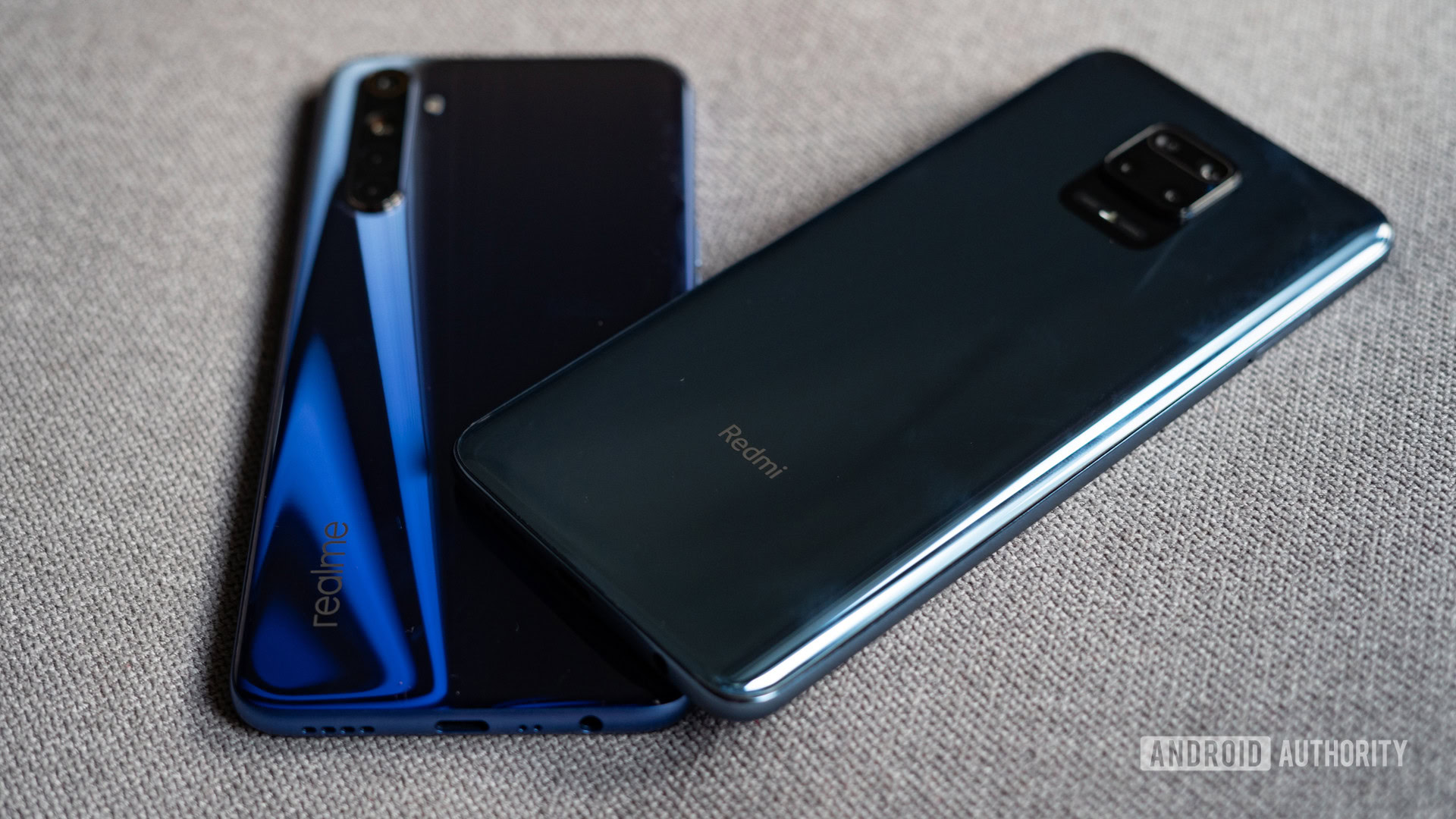
The rear panels are quite different. The Redmi Note 9 Pro strikes a good balance between premium and understated. While the realme’s gradient also comes across as striking, over time I found the dull metallic sheen of the Note 9 Pro a lot more appealing. That said, both phones are extremely susceptible to scratches and scuffs; you would do well to use a case.
Neither phone is waterproof; you’ll have to make do with mere splash resistance. Both phones have fingerprint scanners integrated into the power key. Fast and easy to reach, I had no issue with either approach.
Performance
Performance is a key differentiator between the two phones, but not quite to the degree you’d expect. The Redmi Note 9 Pro brings a Snapdragon 720G to the party. Qualcomm’s latest upper mid-range chipset is powerful and more than capable of holding its own. In fact, we found it to be one of the best options in the price tier.
Meanwhile, the realme 6 sports a MediaTek Helio G90T. In a bubble, the processor is certainly powerful enough. However, it definitely lags behind the 720G in absolute numbers and this matters if you plan to hold onto the phone for an extended period of time.
The MediaTek Helio G90T isn't as powerful as the Snapdragon 720G, but you probably won't notice in everyday use.
For everyday use, I found both phones potent enough and I never faced much of an issue with either. In supported apps and interface elements, the 90Hz display on the realme 6 makes everything appear just a bit smoother. Both phones ship with 4GB RAM and 64GB storage as the base variant. I recommend stepping up to the 6GB / 128GB option for both. On the realme 6, you can opt for up to 8GB RAM, though that might be overkill unless you plan to push the phone hard.
Things are fairly similar on the software side of the equation. Be it MIUI 11 or realme UI, there’s an abundance of bloatware that has become part and parcel of mid-range smartphones. Some can be disabled, while some can’t. Otherwise, both takes on Android are polished to a reasonable degree and offer a feature-rich, smooth user experience.
Battery
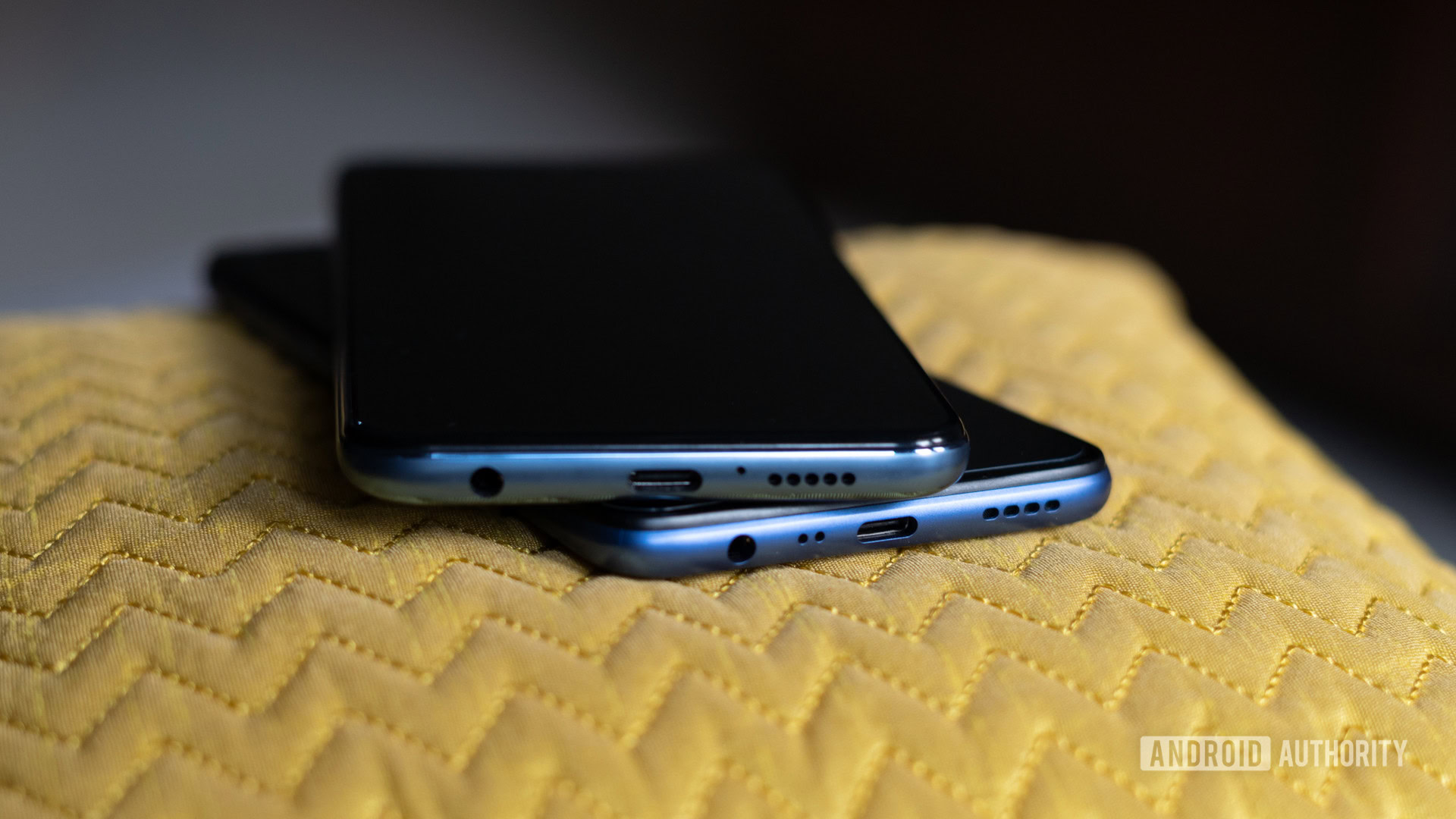
Both the Redmi Note 9 Pro and realme 6 are battery monsters, but one lasts longer than the other. The Redmi Note 9 Pro pairs a 5,020mAh cell with an efficient Snapdragon chipset that enables all-day use. In our testing, we averaged over eight hours of screen-on time. In our Redmi Note 9 Pro review, we put the phone through our battery torture test and achieved six hours of screen-on time as the worst-case scenario.
Meanwhile, the realme 6 has a smaller 4,300mAh battery. Combined with the 90Hz display, longevity isn’t quite as good. We managed between five and six hours of screen-on time. This is significantly less than the Redmi, but still enough for a full day of careful use.
You will have to make a trade-off between a bigger battery and faster charging.
When it comes to charging up the devices, however, realme has Redmi trounced. The 30W charger included with the realme 6 is capable of topping up the device in under an hour. Meanwhile, the Redmi Note 9 Pro’s 18W charger takes a solid 140 minutes to top up the phone.
Camera
Redmi Note 9 Pro
- Rear:
- 48MP primary
- 8MP ultra-wide
- 5MP macro
- 2MP depth-sensing
- Front:
- 16MP
realme 6
- Rear:
- 64MP primary
- 8MP ultra-wide
- 2MP macro
- 2MP depth-sensing
- Front:
- 16MP
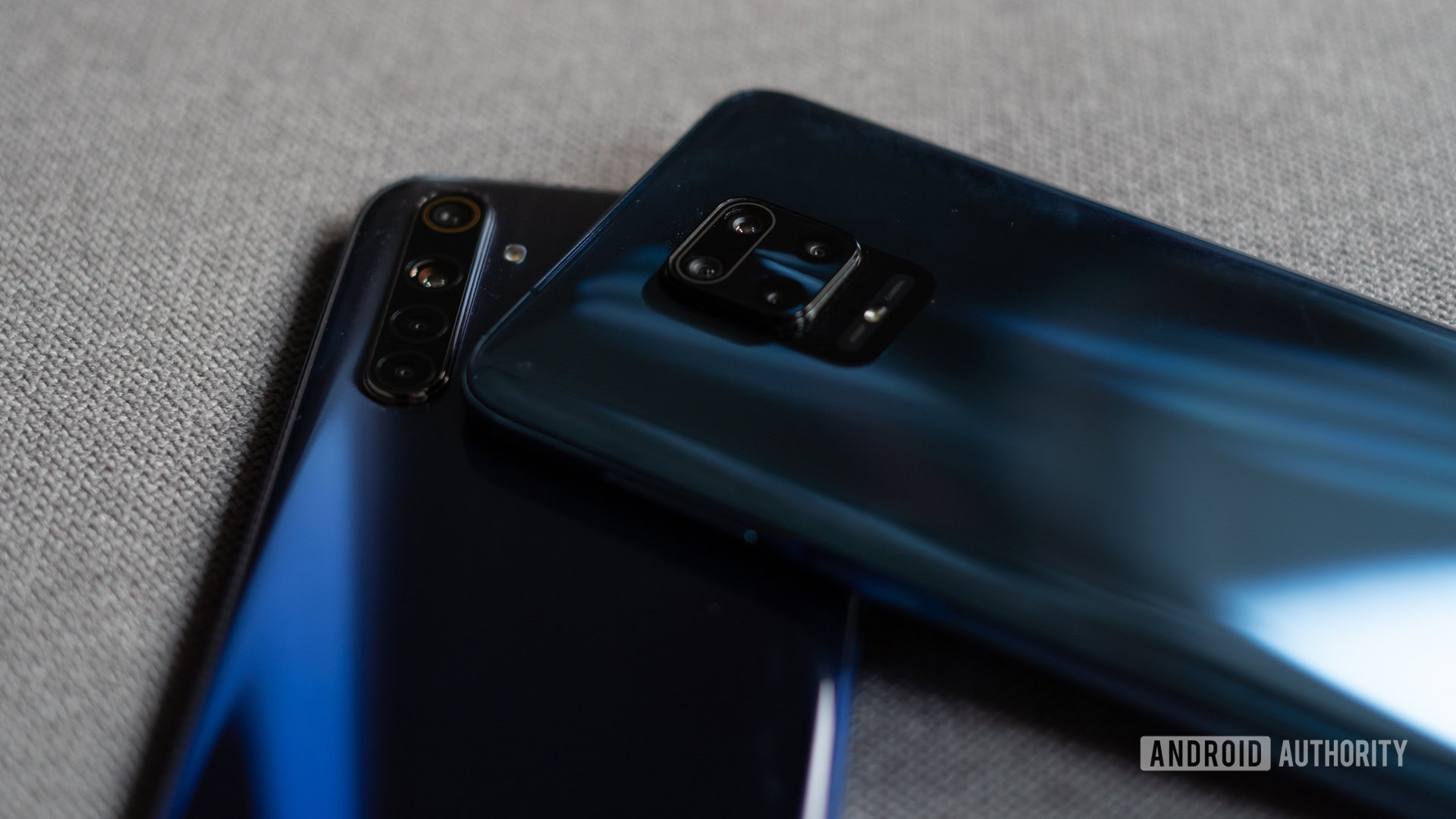
A camera is more than the sum of its hardware. Computational algorithms and image processing hardware play a large role in determining image quality. For the most part, both phones have similar camera systems.
In outdoor testing, it is straightforward to see the differences in processing between the two phones. The Redmi Note 9 Pro displays better HDR performance and delivers true-to-life colors at the expense of a darker exposure. The realme 6, on the other hand, overexposes to bring up shadow details, which derails color accuracy a bit. While this might not be an issue for many users, the heavy-handed sharpening should be. Particularly noticeable in leaves and foliage, the sharpening imparts an artificial crispness to the shot.
Ultra-wide images exhibit similar processing. In this case, the Redmi Note 9 Pro’s image appears to be just a bit too dark and there is a certain softness to the shot. Neither phone captures details well, but the realme 6’s shot looks better.
In our close-up tests, the Redmi Note 9 Pro once against delivered superior HDR performance. This is particularly noticeable in the sky, which still comes across as blue. On the realme 6, the tendency to overexpose completely blows out the sky and makes it look white. Both phones deliver decent natural bokeh, but in my opinion, the Redmi Note 9 Pro pulls ahead just a bit. This, of course, is personal preference.
Low light and night mode performance on both phones is rather good for mid-range hardware. However, the realme 6 bests the Note 9 Pro in delivering a brighter, crisper shot. realme has done a great job improving its night mode algorithms over the last few years, and, more often than not, its hardware manages to outperform most of the competition.
Both cameras have capable selfie shooters. That said, the Redmi Note 9 Pro does a better job at edge detection if you prefer shooting in portrait mode.
Video capabilities are evenly matched on both phones and top off at 4K, 30fps.
If you want to pixel-peep before making your decision, we’ve got a full range of high-resolution Redmi Note 9 Pro and realme 6 image samples available.
Redmi Note 9 Pro vs realme 6: Specs
| Specs | Xiaomi Redmi Note 9 Pro | realme 6 |
|---|---|---|
| Specs Display | Xiaomi Redmi Note 9 Pro 6.67 inches IPS LCD 2,400 x 1,080 20:9 aspect ratio Corning Gorilla Glass 5 | realme 6 6.5 inches IPS LCD 2,400 x 1,080 20:9 aspect ratio Corning Gorilla Glass 3 90Hz 120Hz touch-polling rate |
| Specs Processor | Xiaomi Redmi Note 9 Pro Octa-core Qualcomm Snapdragon 720G Adreno 618 | realme 6 Octa-core MediaTek MT6785 Helio G90T Mali G76 MC4 |
| Specs RAM | Xiaomi Redmi Note 9 Pro 4/6GB | realme 6 4/6/8GB |
| Specs Storage | Xiaomi Redmi Note 9 Pro 64/128GB Expandable up to 512GB | realme 6 64/128GB Expandable up to 512GB |
| Specs Cameras | Xiaomi Redmi Note 9 Pro Rear camera: 48MP (wide) 8MP (ultra-wide) 5MP (macro) 2MP (depth) Front: 16MP selfie cam | realme 6 Rear camera: 64MP (wide) 8MP (ultra-wide) 2MP (macro) 2MP (depth) Front: 16MP selfie cam |
| Specs Battery | Xiaomi Redmi Note 9 Pro 5,020mAh 18W charging | realme 6 4,300mAh 30W charging |
| Specs Software | Xiaomi Redmi Note 9 Pro Android 10 MIUI 11 | realme 6 Android 10 realme UI |
| Specs Dimensions | Xiaomi Redmi Note 9 Pro 165.8 x 76.7 x 8.8mm 209g | realme 6 162.1 x 74.8 x 8.9mm 191g |
| Specs Price | Xiaomi Redmi Note 9 Pro Rs 12,999 (4GB/64GB) Rs 15,999 (6GB/128GB) | realme 6 Rs 12,999 (4GB/64GB) Rs 14,999 (6GB/128GB) Rs 15,999 (8GB/128GB) |
How do the prices compare?
The realme 6 and Redmi Note 9 Pro start at the same price point. Priced at Rs. 12,999 (~$176) for the 4GB RAM, 64GB variant, the two phones offer incredible value. Once you start going up the variants, the value proposition changes.
The Redmi Note 9 Pro with 6GB RAM and 128GB storage commands a price tag of Rs. 16,999 (~$230), while the realme 6 costs Rs. 14,999 (~$200). That’s a price difference of Rs. 2000 (~$30), a significant chunk of change when looking at value options.
If you really want to splurge, the realme 6 with 8GB RAM and 128GB storage is available for Rs. 15,999 (~$216), which is still cheaper than the high-end variant of the Redmi Note 9 Pro.
However, in 2021, you have better options available. This includes the Redmi Note 10 Pro that brings significant upgrades like a 120Hz Super AMOLED screen and improved cameras for the same money. Meanwhile, if you have a preference for realme smartphones, the company has leapfrogged all the way to the realme 8 Pro that takes a more focussed approach. Benefits include a refreshed, but polarising design, as well as a rather good 108MP camera.
Redmi Note 9 Pro vs realme 6: Which should I buy?
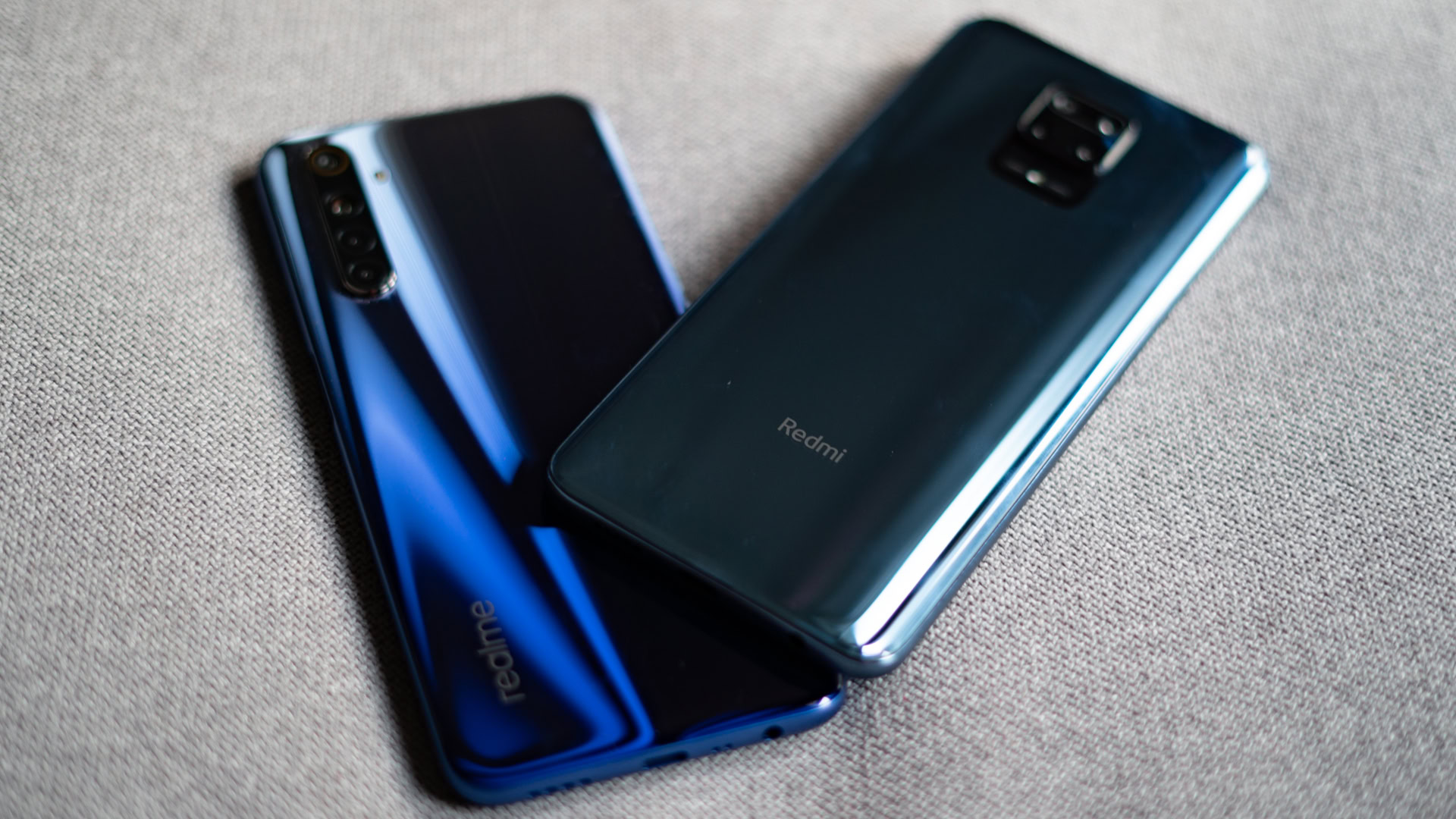
The two phones present an interesting conundrum. The Redmi Note 9 Pro sports better internals, a better primary camera, and, arguably, a more sophisticated design.
However, the realme 6 presents the better value — and value is a key component in the affordable mid-range space. What little you lose in power, you gain in an almost-as-good camera, appealing 90Hz display, faster charging, and, most importantly, a lower price point.
The Redmi Note 9 Pro might be the more powerful phone, but the realme 6 delivers better value for money.
Objectively, in 2021, you should be looking at the latest options from either brand. And between the Redmi Note 10 Pro and realme 8 Pro, it is the former that offers more bang for your buck, as well as a better user experience.
However, if you were to choose between the Redmi Note 9 Pro and realme 6, it is the realme 6 that presents better value.